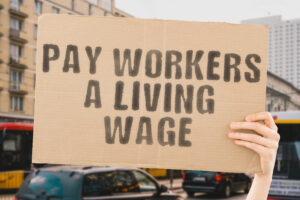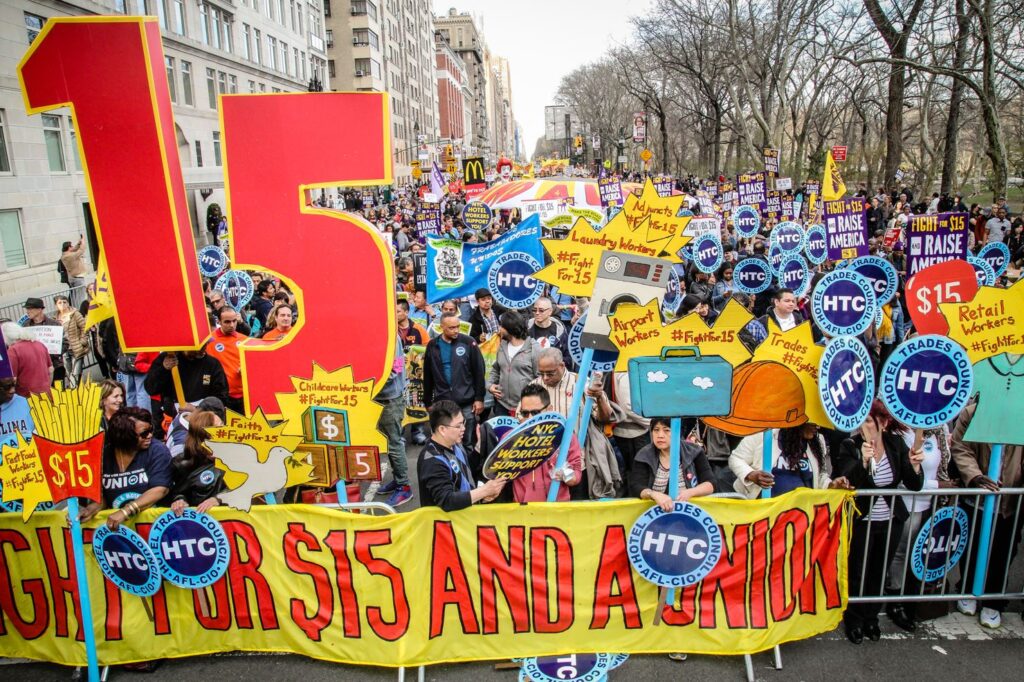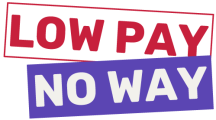Our vision: Minimum pay that gives Australians a living wage
Imagine living in a country where the minimum wage was actually enough money to live off? It’s not such a crazy thought.

In this blog, we’re talking about our vision for the future. How can we provide a minimum wage that actually makes sure workers in Australia have a living wage?
“As unionists, one of our core convictions is that even on the minimum wage, you should not have to worry about affording the basics in life. You should be able to pay your bills and rent, have enough money for food and still have some left over to enjoy your life,” explains United Workers Union National President, Jo Schofield.
“In a country as wealthy as ours, there’s simply no reason why anyone working full-time should ever be in poverty.”
Where does Australia sit on the global ladder?
As discussed in the last blog, the OECD (an inter-government organisation that serves the world’s advanced economies) determines a minimum wage should be at least 60% of the adult median wage.
This gap between a country’s minimum wage and people on middle incomes is called the “minimum wage bite”. If a country scores highly, it means workers on the minimum have better-paying jobs. Although Australia’s minimum wage bite used to be above 60%, by 2021 it had fallen as low as 51%.
How do we compare to other countries? Scroll to the bottom of this page to see the global leaderboard.
As you can see, we used to have one of the highest minimum wages in the world. As of 2023, we’re hovering in the middle of the pack. We’re definitely higher than the US at 27% and is an atrocity. We’re doing better than Japan at 46%. Ireland is at 48% and their workers on the lowest wage aren’t doing that great either.
But countries above us include the UK at 58% and New Zealand at 71%.
Some countries set their minimum pay rate differently, which can have a big impact on how much workers on these wages are paid. For example, in the UK, the Low Pay Commission advises government on increases to the National Living Wage. Note, it’s called living wage, not minimum wage. Their initial target was 60% of median earnings.

“So the federal minimum wage is US$7.25 an hour. But in places like California, Washington State and New York, it’s around $15 an hour,” explained Tim Lyons, former Assistant Secretary of the Australian Council of Trade Unions.
In Germany, they didn’t have a minimum wage until 2015 because they had such a good collective bargaining system. At the time, there were predictions that low-wage jobs were going to be destroyed, which did happen.
“But what happened was they turned into much higher paid jobs. And the low-paid jobs were substituted by technology. The employers started spending money on capital,” Tim continued.
What’s clear is that Australia has lost its way. There’s a gaping chasm between workers on low pay and those in the middle and it’s getting wider. Meanwhile, corporate profits are booming and CEOs are enriching themselves with mega-salaries and eye-watering bonuses. We must turn this around.
What system could improve things?
No country has the perfect solution.
“There’s no magic. It’s a choice that a society makes about how much value we place on people at the bottom end of the labour market,” said Tim.
But there are a few things that could make a real difference people on minimum and award wages.
1. We need to change the way we think about the minimum wage.
We shouldn’t think of the minimum wage as a safety net. It should be a foundation.
“A safety net is something that catches people when they fall through the cracks. A foundation holds people up,” Tim explained.
We should think of it as a living wage, not a minimum wage.
2. We need more government intervention.
According to Tim, we need the Federal Government to rethink what the role of the minimum wage and award wages are.
“Is it something just for people who are on the bones of their arse or are we talking about creating a living wage where people can live with dignity?” he asked.
 3. We need a goal
3. We need a goalLike the UK, we need to set a bold target for where our minimum wage should be – one that will help us eliminate working poverty.
“We should have an ambition to have the minimum wage pegged at (say) no less than 60% of the median, which is the OECD definition of low pay,” Tim said.
“Once we hit that target, we should then aim even higher,” Jo said.
The UK now has a target of 66% of median earnings and their unions are now pushing to take their national target even higher, up to 75%.
“If we keep going the way we’re going, the minimum wage will keep dropping compared to average income, making it even harder to make a living wage,” Jo said.
What’s next?
Jo is convinced that we need change and we need it now.
“The minimum wage is absolutely essential to members of our union. It’s not acceptable for them or the millions of others who rely on the minimum and award wages to keep going backwards, unable to afford decent housing and living in fear of their next bill.”
“That has to change and we need to lead that change,” Jo said.
Do you agree? Then, it’s time to join our fight for a fairer and better Australia

